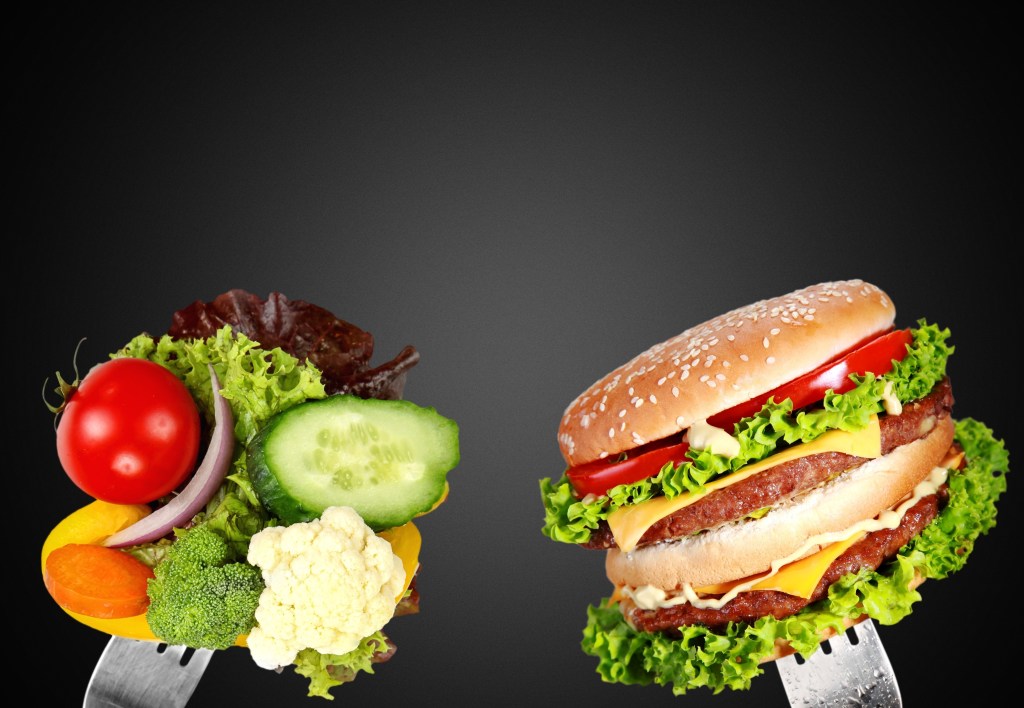At a glance
Prediabetes is a metabolic condition marked by elevated blood sugar levels and insulin resistance, often caused by a high-carb diet, processed foods, and excess body weight. Combining a whole-food-based ketogenic diet with intermittent fasting is an excellent strategy to help normalize blood sugar regulation, improve insulin sensitivity, and promote weight loss.
Prediabetes is characterized by elevated blood sugar levels and is typically a result of insulin resistance, a severe metabolic imbalance linked to a diet high in sugars and carbohydrates.
A prediabetes diagnosis doesn’t necessarily mean you will develop diabetes, especially if you take proactive measures such as following a prediabetes diet plan.
Discover how combining a ketogenic diet with intermittent fasting promotes healthy blood sugar levels and may help reverse insulin resistance and prediabetes.
What is prediabetes?
Prediabetes is a health condition characterized by chronically elevated blood sugar levels, which usually are a result of a diet high in carbohydrates, added sugars, and processed foods.
Foods containing sugars, cereals, refined grains, and starches, such as white rice, bread, flour, and pasta, are quickly digested and absorbed into the bloodstream, which can cause rapid blood sugar spikes.
The body perceives elevated blood sugars as toxic and responds by increasing the release of insulin, a critical metabolic hormone needed to maintain normal blood glucose levels.
Over time, high concentrations of insulin can make your cells less sensitive to insulin, a condition known as insulin resistance. This impairs the body’s ability to regulate blood sugar levels and is the leading cause of prediabetes.
Individuals with prediabetes are at significant risk of developing type 2 diabetes and other serious health issues such as metabolic syndrome, obesity, and cardiovascular disease.
Watch the video below to discover how to stop prediabetes from progressing into diabetes.
Signs of prediabetes
According to research published in StatPearls, “40 percent of U.S. adults aged 18 to 44 are insulin-resistant.”1
Unfortunately, there are very few early warning signs of chronically elevated blood sugar levels. Most people don’t know they have prediabetes, leaving them at risk of diabetes and other serious health complications.
As prediabetes progresses and blood sugar regulation worsens, various metabolic processes can be impacted, which triggers the gradual onset of several health problems.
Here are common signs of prediabetes or diabetes:
- Darkened skin on neck, armpits, and groin
- Increased thirst and frequent urination
- Increased hunger and cravings
- Low energy
- Reduced mental clarity
- Vision changes
- Occasional pins and needles sensations
- Frequent infections
- Poor wound healing
- Unexplained changes in weight

What causes prediabetes?
While some individuals have a genetic predisposition to insulin resistance, prediabetes is most commonly caused by dietary and lifestyle factors.
Lack of physical activity and a diet high in carbs and added sugar are primary risk factors for elevated blood sugar levels and insulin resistance.
A sedentary lifestyle and unhealthy eating habits are also linked to belly fat and inflammation, which have been found to contribute to insulin resistance and worsen prediabetes.
Research published in Frontiers in Immunology suggests that abdominal fat releases inflammatory molecules that decrease cellular insulin sensitivity, thereby contributing to metabolic imbalances and prediabetes.2
“Obesity isn’t just a symptom of prediabetes,” explains Dr. Berg. “Excess weight is an independent driver of insulin resistance and creates a vicious cycle of poor blood sugar management, insulin resistance, and further weight gain.”
In addition, individuals with African American, Hispanic, and Native American ethnicity are at increased risk of prediabetes due to a complex interplay of genetics, dietary patterns, and cultural factors.

Can prediabetes be reversed?
Yes, it’s possible to reverse prediabetes by making the right dietary changes, increasing physical activity, and losing excess weight.
According to a statement published by the American Diabetes Association (ADA), “For some people with prediabetes, early treatment as well as moderate lifestyle changes can actually return blood glucose levels to a normal range, effectively preventing or delaying type 2 diabetes.”3
Adopting healthy eating habits that help keep blood sugar levels steady promotes balanced insulin secretion and cellular insulin sensitivity, which can play a key role in improving metabolic markers associated with prediabetes.
In addition, combining a healthy diet with regular exercise helps you lose belly fat, which is a key factor in achieving better blood sugar control and restoring metabolic health.
Because of the detrimental impacts of excess body weight on insulin sensitivity, maintaining a healthy weight is crucial to support metabolic health and help maintain normal blood sugar levels.
A study published in Nutrition and Diabetes investigated the effects of weight loss on prediabetes risk and concluded, “Weight loss itself was the strongest predictor of improved insulin sensitivity, whereas weight regain significantly predicted reduced insulin sensitivity.”4

The ultimate prediabetes diet
So, what’s the best diet to reverse prediabetes?
Many healthcare providers recommend consuming a diet rich in whole grains, high-fiber foods, and healthy protein while avoiding certain saturated or trans fats and sugary drinks to manage prediabetes.
However, evidence suggests that this dietary approach isn’t sufficient to normalize blood sugar balance and restore metabolic health for most individuals with prediabetes.
The most crucial dietary aspect for reversing prediabetes is to keep blood sugar levels balanced, which can only be achieved by limiting carbohydrate intake.
While whole grains, whole wheat bread, brown rice, and starchy vegetables can be nutrient-rich, they are significant sources of carbohydrates and high on the glycemic index (GI).
Foods with a high GI negatively impact blood sugar levels, which explains why many people with prediabetes struggle to improve insulin resistance and don’t lose weight despite consuming what they believe is a healthy diet.
In contrast, prediabetic individuals who limit their carb intake and practice intermittent fasting typically experience more significant weight loss and have drastically improved blood glucose levels compared to those following a diet without carbohydrate restriction.

Benefits of the ketogenic diet for prediabetes
A low-carb ketogenic diet is one of the most effective dietary tools to restore metabolic imbalances and reverse prediabetes.
Limiting carbohydrate-containing foods keeps blood sugar and insulin levels low, which is critical to reverse prediabetes.
In addition, a high-fat, low-carb diet pushes your liver to burn fat instead of sugar for energy, which generates large amounts of ketones, a by-product of fat burning and a very efficient energy source for your cells.
When ketones enter your circulation and start to fuel your cells, your body enters a metabolic state known as ketosis.
Ketosis enables your liver to utilize stored body fat as a primary fuel source, which is associated with weight loss, improved insulin sensitivity, and better metabolic health.
A study published in Nutrition and Metabolism confirms the metabolic benefits of the keto diet and suggests that a low-carb diet is associated with better weight management, significant improvements in insulin sensitivity, and markedly improved blood sugar control.5
Some critics of the low-carb diet point out that keto is a restrictive diet that limits food choices and can lead to nutrient deficiencies.
That’s why it’s crucial to do Healthy Keto®, a nutritious low-carb diet that focuses on non-GMO organic vegetables, grass-fed beef, game meats, wild-caught fish, pasture-raised eggs, and full-fat organic dairy.

Benefits of intermittent fasting for prediabetes
The metabolic benefits of a low-carb diet for prediabetes can be maximized if you combine keto with intermittent fasting.
Intermittent fasting is a mealtime schedule that cycles between fasting periods and time-restricted eating windows. The 16:8 intermittent fast is a popular fasting pattern that involves 16 hours of fasting followed by an eight-hour eating window.
During periods of fasting, your liver is forced to burn body fat to generate energy, which has profound metabolic benefits, promotes weight loss, and maintains balanced blood sugar and insulin levels.
Because of intermittent fasting’s benefits for blood sugar regulation and body composition, time-restricted eating can be a valuable therapeutic tool for prediabetes.
Evidence published in The American Journal of Clinical Nutrition found that intermittent fasting is associated with improved fasting insulin levels, enhanced insulin sensitivity, and normalized blood sugar levels.6

How to start Healthy Keto and intermittent fasting
Depending on your current diet, getting started with Healthy Keto and intermittent fasting can mean a significant shift in your eating habits.
However, being organized and using a few keto hacks can help make transitioning into keto easy and sustainable, especially if you are on a busy schedule.
To promote fat burning, limit your net carb intake to no more than 20 to 50 grams per day and obtain most of your calories from healthy fats.
Focus on simple and nutritious low-carb foods such as grass-fed meats, fish, eggs, dairy, leafy green vegetables, and healthy fats like coconut and olive oil, avocado, butter, seeds, and nuts.
Throw out high-carb and processed foods, stock up on keto-approved foods, and find a keto-sweetener if you have a sweet tooth.
Monk fruit and stevia are low-carb sugar alternatives that can be used to sweeten your coffee, make desserts, and curb the occasional sugar cravings.
If you’re considering intermittent fasting to improve your metabolic health, it’s crucial to slowly ease into your chosen fasting pattern to allow your body to adapt to the metabolic and hormonal changes of caloric restriction.
Most individuals benefit from starting with a 14-hour fast followed by a ten-hour eating window and gradually prolonging their fasting periods. While some people can achieve a 16:8 fast within a week, others may take one to two months to reach this goal.
Ketosis can trigger water loss and electrolyte depletion during the early phases of adapting to a keto diet and intermittent fasting.
Symptoms such as dehydration, tiredness, muscle soreness, and irritability are common signs of ketosis-related electrolyte imbalances and are often referred to as keto-flu.
Staying hydrated and replenishing electrolytes–including potassium, sodium, calcium, and magnesium–with nutritious whole foods can help keep side effects at bay and speed up keto-adaptation.
Key takeaways
- Prediabetes is characterized by chronically elevated blood sugar levels and insulin resistance, increasing the risk of type 2 diabetes and cardiovascular issues.
- Limiting carbohydrate intake by following a Healthy Keto diet helps stabilize blood sugar levels and improve cellular insulin sensitivity.
- Intermittent fasting enhances the metabolic benefits of the keto diet by supporting weight loss, maintaining balanced insulin levels, and improving glucose control.
- Consistent dietary and lifestyle changes can help reverse prediabetes within a few weeks, greatly reducing the risk of metabolic disorders and heart disease.
FAQ
1. What are the signs of prediabetes?
Prediabetes often shows no noticeable symptoms, and many individuals with chronically elevated blood sugar levels are unaware of this potential health issue.
In some cases, symptoms such as increased thirst, frequent urination, hunger and cravings, fatigue, poor memory, and blurred vision can indicate insulin resistance and prediabetes.
2. What is the best prediabetes diet?
The best prediabetes diet combines the profound metabolic health benefits of a nutritious low-carb diet like Healthy Keto® with intermittent fasting.
While the keto diet limits carbohydrate intake, which is crucial to improve insulin resistance and blood sugar control, intermittent fasting promotes a healthy weight and is associated with better metabolic health.
3. Is fasting good for prediabetes?
Fasting, particularly intermittent fasting, has been found beneficial for individuals with prediabetes.
Time-restricted eating keeps blood sugar levels steady and forces the liver to utilize stored body fat to generate energy, which promotes weight loss and helps balance insulin and blood sugar levels.
4. Is it possible to reverse prediabetes?
Yes, reversing prediabetes by making beneficial dietary and lifestyle changes is possible.
Following a low-carb diet in combination with intermittent fasting and regular exercise can improve insulin resistance, which is the leading cause of poor blood sugar control and prediabetes.
5. How long does it take to reverse prediabetes?
How long it takes to reverse prediabetes depends on your previous diet, severity of insulin resistance, and overall health.
While some individuals can normalize blood sugar levels within a few weeks of intermittent fasting and a ketogenic diet, others may need several months to improve metabolic health and reverse prediabetes.
6. What foods should I avoid if I’m prediabetic?
If you’re prediabetic, it’s vital to limit your intake of carbohydrates and sugars found in processed foods, breads, rice, pasta, and cereal grains to maintain balanced blood sugar levels.
It’s also recommended to avoid carb-containing starchy vegetables, including potatoes, sweet corn, and sweet potatoes, as well as sugary beverages such as soda, sweet tea, sports drinks, sweetened coffee drinks, and energy drinks.
7. What foods should I eat if I’m prediabetic?
To improve blood sugar balance and reverse prediabetes, it’s best to focus on organic non-starchy vegetables, grass-fed beef, game meats, wild-caught fish, pasture-raised eggs, and full-fat organic dairy.
These low-carb foods don’t significantly impact blood sugar or insulin levels, which helps prevent blood sugar spikes and insulin resistance linked to prediabetes and the development of diabetes.
8. What is the fastest way to fix prediabetes?
The fastest way to restore metabolic health and reverse prediabetes is by consistently following a nutritious low-carb diet like Healthy Keto in combination with intermittent fasting.
A ketogenic diet and time-restricted eating push your liver to burn fat instead of sugars for energy, which can significantly improve insulin sensitivity and help normalize blood sugar control.
9. Are bananas okay for prediabetes?
No, bananas aren’t a good choice if you are prediabetic. Bananas are high in carbohydrates and can cause blood sugar spikes and worsen insulin resistance, which are the root causes of prediabetes.
Sources
- https://www.ncbi.nlm.nih.gov/books/NBK507839/ ?
- https://www.frontiersin.org/articles/10.3389/fimmu.2023.1014778/full ?
- https://diabetes.org/about-diabetes/prediabetes ?
- https://www.ncbi.nlm.nih.gov/pmc/articles/PMC5519190/ ?
- https://www.ncbi.nlm.nih.gov/pmc/articles/PMC2424054/ ?
- https://www.sciencedirect.com/science/article/pii/S0002916522003926 ?

















